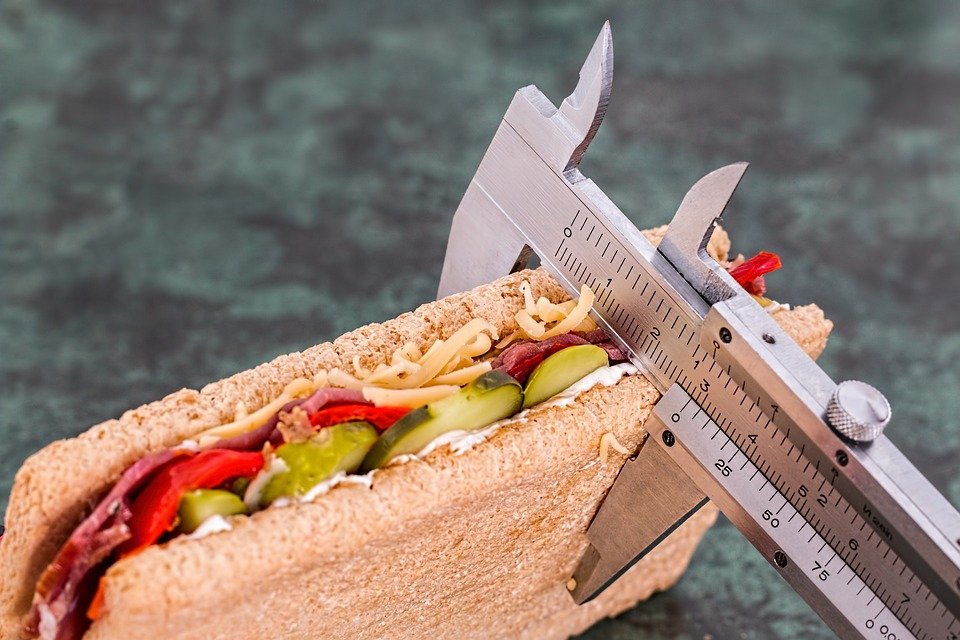Lose Fat Of Stomach
Lose Fat of Stomach: A Comprehensive Guide to Achieving a Toned Midsection
Introduction
In today’s health-conscious society, many people aspire to have a well-toned and flat stomach. However, achieving this goal can be challenging, especially when confronted with various ineffective and misleading Weight loss strategies. In this article, we will explore proven methods to lose fat from the stomach, providing you with valuable insights and practical tips to help you attain a trimmer waistline.
The Science Behind Belly Fat
To effectively target fat loss in the stomach area, it is essential to understand the science behind belly fat accumulation. The fat around your midsection can be categorized into two types: subcutaneous fat and visceral fat. Subcutaneous fat is located directly beneath the skin, while visceral fat surrounds the organs deep within the abdominal cavity.
Visceral fat, in particular, poses health risks as it is associated with various diseases like heart conditions, diabetes, and certain types of cancer. Understanding the distinction between these two types of fat is crucial when formulating a strategy to lose fat from your stomach.
Creating a Caloric Deficit
One of the fundamental principles of weight loss is creating a caloric deficit, which means consuming fewer calories than you burn. However, it is important to note that spot reduction, or losing fat from a specific area, is not possible. Fat loss occurs throughout the body, and the stomach area will eventually show results as you reduce overall body fat.
To create a caloric deficit, we must focus on two key aspects: diet and exercise. Adopting a balanced and nutritious diet that includes a variety of whole foods, such as lean protein, fruits, vegetables, whole grains, and healthy fats, is essential. Additionally, reducing your intake of processed foods, sugary beverages, and excessive amounts of alcohol will contribute to achieving a caloric deficit.
The Power of Cardiovascular Exercise
Cardiovascular exercise is a fantastic tool to burn calories and promote overall fat loss. Engaging in activities such as running, cycling, swimming, or brisk walking raises your heart rate, enabling you to burn stored fat. Aim to incorporate at least 150 minutes of moderate-intensity cardio exercises into your weekly routine.
Additionally, high-intensity interval training (HIIT) has gained popularity due to its effectiveness in burning fat. HIIT involves alternating between short bursts of intense exercise and periods of active recovery. This method not only burns calories during the workout but also increases your metabolism, leading to continued fat burning even after you’ve finished exercising.
Strength Training for a Toned Midsection
While cardiovascular exercise contributes to overall fat loss, strength training plays a vital role in shaping and toning your stomach muscles. By building lean muscle mass, you can increase your metabolic rate, helping you burn more calories throughout the day.
Including exercises that target your core, such as planks, Russian twists, and bicycle crunches, can strengthen your abdominal muscles, giving you a more defined and toned midsection. Additionally, compound exercises like squats and deadlifts engage multiple muscle groups, further aiding in fat loss and toning.
The Importance of Rest and Recovery
Often overlooked, rest and recovery are crucial components of any successful fat loss journey. Giving your body time to recover allows your muscles to repair and grow stronger. Moreover, adequate sleep is essential for hormonal balance, appetite regulation, and overall well-being.
Stress management techniques, such as meditation, deep breathing exercises, or engaging in hobbies, can also contribute to better overall health and weight management. Remember, a holistic approach that considers both physical and mental well-being is key to long-term success.
Conclusion
Losing fat from the stomach requires a multifaceted approach that combines a balanced diet, regular cardiovascular exercise, strength training, and optimal rest and recovery. It is essential to remember that spot reduction is not possible, and fat loss occurs throughout the body. By adopting a sustainable lifestyle that incorporates these strategies, you can achieve a toned midsection and improve your overall health and well-being. Stay committed, be patient, and embrace the journey towards a healthier you.
Commonly Asked Questions About Lose Fat Of Stomach
1. Can I target fat loss specifically in my stomach?
No, spot reduction is not possible when it comes to losing fat in a specific area of your body, including the stomach. When you lose weight, your body decides where it wants to burn fat from. However, there are certain strategies you can adopt to help reduce overall body fat, which will eventually lead to a reduction in stomach fat.
Three important points to note:
1. Spot reduction is not possible; you cannot target fat loss specifically in your stomach.
2. Weight loss and fat loss are not the same thing; losing weight does not necessarily mean losing fat.
3. Overall body fat reduction is key to achieving a reduction in stomach fat.
2. What are some effective ways to lose fat in the stomach area?
While spot reduction may not be possible, there are several effective strategies you can incorporate into your routine to help lose fat in the stomach area. These include adopting a healthy diet, engaging in regular cardiovascular exercise, and incorporating strength training exercises.
Three important points to note:
1. A healthy diet plays a crucial role in losing fat in the stomach area.
2. Regular cardiovascular exercise helps burn calories and reduce overall body fat, including stomach fat.
3. Strength training exercises help build muscle and increase your metabolism, ultimately aiding in fat loss.
3. Is there a specific diet that can help me lose stomach fat?
While there is no specific diet that solely targets stomach fat, adopting a healthy and balanced diet is essential for overall fat loss, including in the stomach area. Focus on consuming nutrient-dense foods, such as fruits, vegetables, lean proteins, whole grains, and healthy fats. Avoid or limit the intake of processed foods, sugary beverages, and excessive alcohol.
Three important points to note:
1. A healthy and balanced diet is crucial for losing stomach fat.
2. Nutrient-dense foods should be prioritized, including fruits, vegetables, lean proteins, whole grains, and healthy fats.
3. Processed foods, sugary beverages, and excessive alcohol should be avoided or limited.
4. How often should I exercise to lose stomach fat?
To effectively lose stomach fat, it is recommended to engage in regular exercise. Aim for at least 150 minutes of moderate-intensity aerobic activity or 75 minutes of vigorous-intensity aerobic activity per week. Additionally, incorporating strength training exercises at least twice a week is beneficial.
Three important points to note:
1. Regular exercise is essential for losing stomach fat.
2. Aim for at least 150 minutes of moderate-intensity aerobic activity or 75 minutes of vigorous-intensity aerobic activity per week.
3. Strength training exercises should be incorporated at least twice a week.
5. Are there any lifestyle changes that can help with losing stomach fat?
Yes, making certain lifestyle changes can have a positive impact on losing stomach fat. These include managing stress levels, getting enough sleep, reducing alcohol intake, and staying hydrated. Additionally, avoiding sedentary behavior and incorporating more physical activity into your daily routine can also contribute to fat loss.
Three important points to note:
1. Lifestyle changes, such as managing stress levels and getting enough sleep, can aid in losing stomach fat.
2. Reducing alcohol intake and staying hydrated are also important factors.
3. Avoiding sedentary behavior and increasing physical activity can help with overall fat loss, including in the stomach area.
Common Misconceptions about Losing Fat of the Stomach
1. Spot Reduction
One of the most common misconceptions about losing fat from the stomach is the idea of spot reduction. Many people believe that they can specifically target and reduce fat solely from their stomach area through targeted exercises or special diets. However, it is important to understand that spot reduction is a myth. Fat loss occurs throughout the body, and it is not possible to selectively burn fat from a specific area.
2. Abdominal Exercises Alone
Another misconception is that solely performing abdominal exercises will result in a flat stomach. While exercises that target the abdominal muscles can help strengthen and tone the area, they are not sufficient on their own to reduce belly fat. Fat loss requires a combination of regular exercise, a balanced diet, and overall body fat reduction.
3. Crash Diets and Fad Diets
Crash diets or fad diets are often seen as quick fixes for losing stomach fat. These diets usually involve severe calorie restriction or eliminating entire food groups, promising rapid weight loss. However, these diets are not sustainable in the long term and can actually be detrimental to overall health. While they may result in temporary weight loss, the lost weight is often regained once normal eating patterns resume.
4. Targeting Specific Foods
Many individuals believe that eliminating certain foods or food groups, such as carbohydrates or fats, will lead to a reduction in belly fat. However, eliminating specific foods or food groups is not the key to losing stomach fat. A balanced diet that includes a variety of nutrients is essential for overall health and weight loss. It is important to focus on portion control, mindful eating, and creating a calorie deficit through a balanced diet rather than targeting specific foods.
5. Only Cardiovascular Exercise
Some people believe that cardio exercises, such as running or cycling, are the only effective way to lose stomach fat. While cardiovascular exercise is beneficial for overall health and can contribute to calorie burn, it is not the only type of exercise required for fat loss. Incorporating strength training exercises into a fitness routine is important for building lean muscle mass, which helps increase metabolism and burn more calories even at rest.
Conclusion
It is crucial to be aware of these common misconceptions about losing fat from the stomach. Spot reduction, relying solely on abdominal exercises, crash diets, targeting specific foods, and focusing only on cardiovascular exercise are all misconceptions that can hinder progress towards achieving a flat stomach. Instead, it is important to adopt a holistic approach that includes a balanced diet, regular exercise, strength training, and a sustainable lifestyle. By debunking these misconceptions, individuals can make informed choices and work towards their fitness goals effectively.
Lose Fat Of Stomach
#Lose #Fat #Stomach


